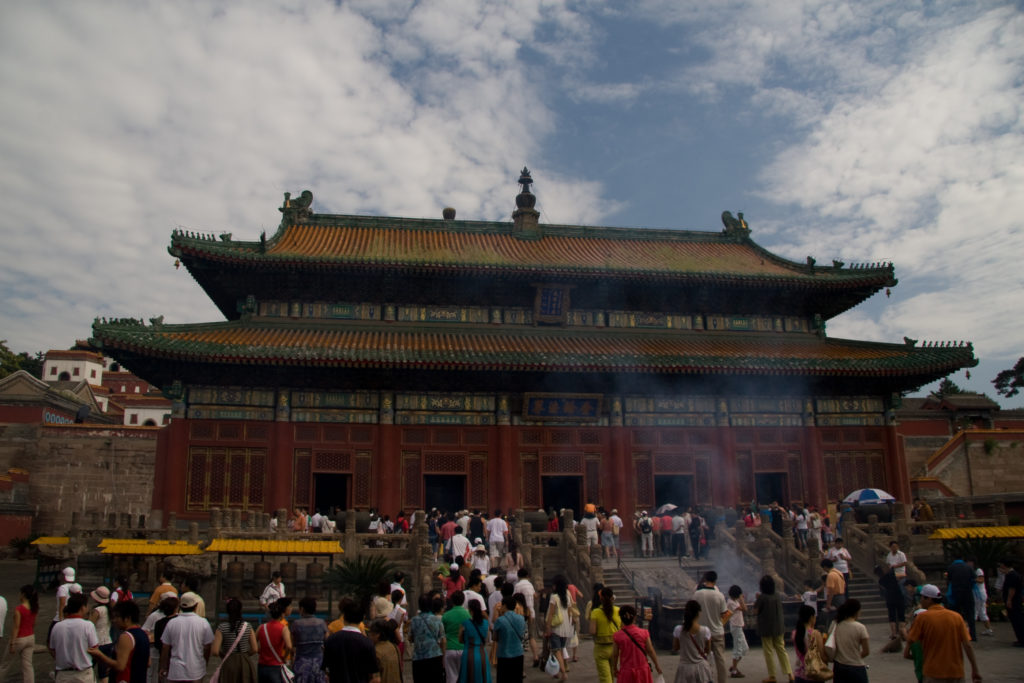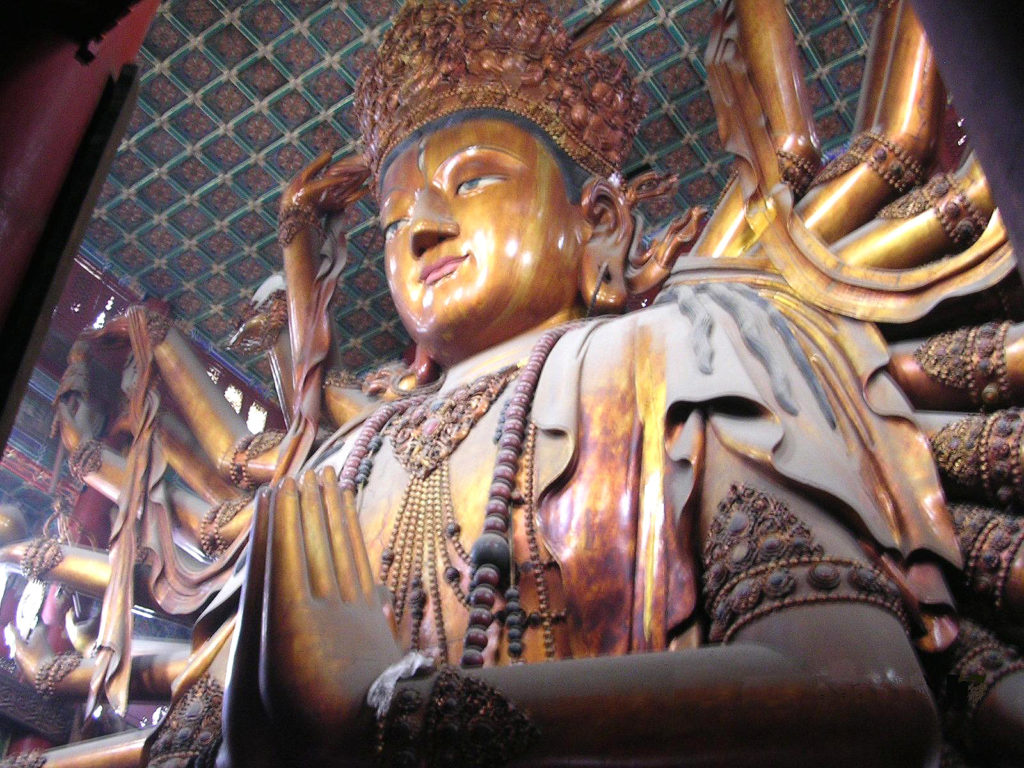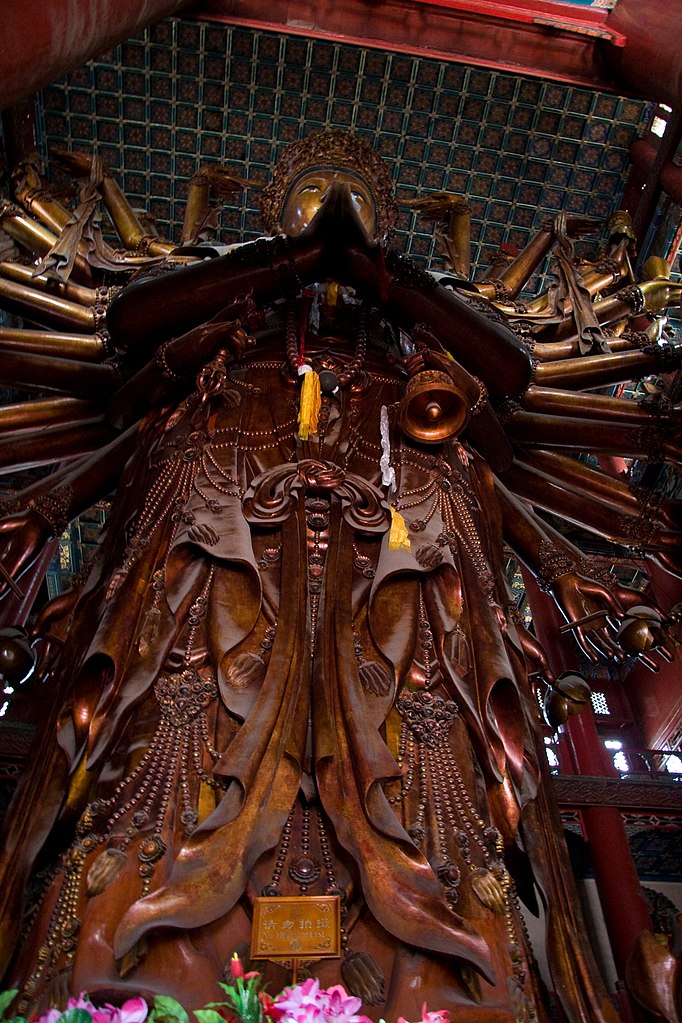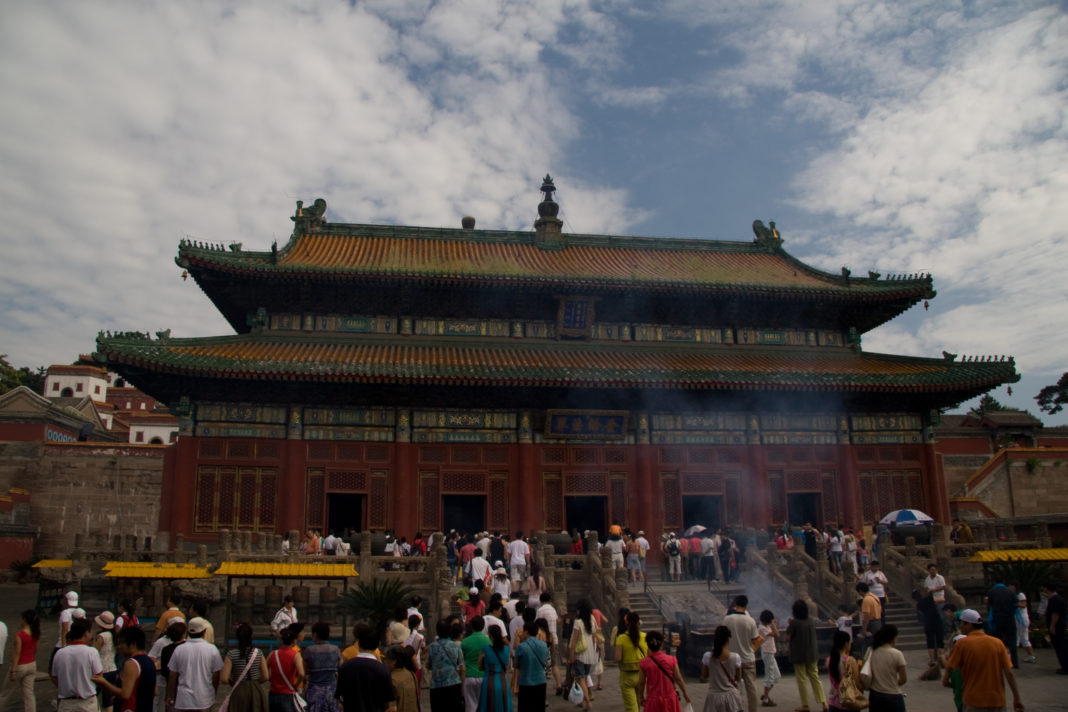The Puning Temple, commonly called the Big Buddha Temple, is a Buddhist temple complex in Chengde, Hebei province, China. It was built in 1755 during the reign of the Qianlong Emperor in the Qing dynasty. Puning is one of the “Eight Outer Temples” of Chengde.

The Puning Temple was modeled after the Samye Monastery, the sacred Buddhist site in Tibet (much as the Putuo Zongcheng Temple was modeled after the Potala Palace in Lhasa). The front temple was constructed in the Chinese style, although the temple complex follows both Chinese and Tibetan architectural styles.

The Puning Temple houses the world’s tallest wooden sculpture of the Bodhisattva Avalokiteśvara, hence it is often nicknamed the “Big Buddha Temple”. The complex features temple halls, pavilions, drum towers, and bell towers. The statue is 22.28 meters high and weighs 110 tons.

As of 1994, the Chengde Mountain Resort and Chengde’s Eight Outer Temples (including the Puning Temple) were established as UNESCO World Heritage Sites. Today, the Puning Temple remains a site of tourist attraction and local festivities.
According to the Wikipedia















